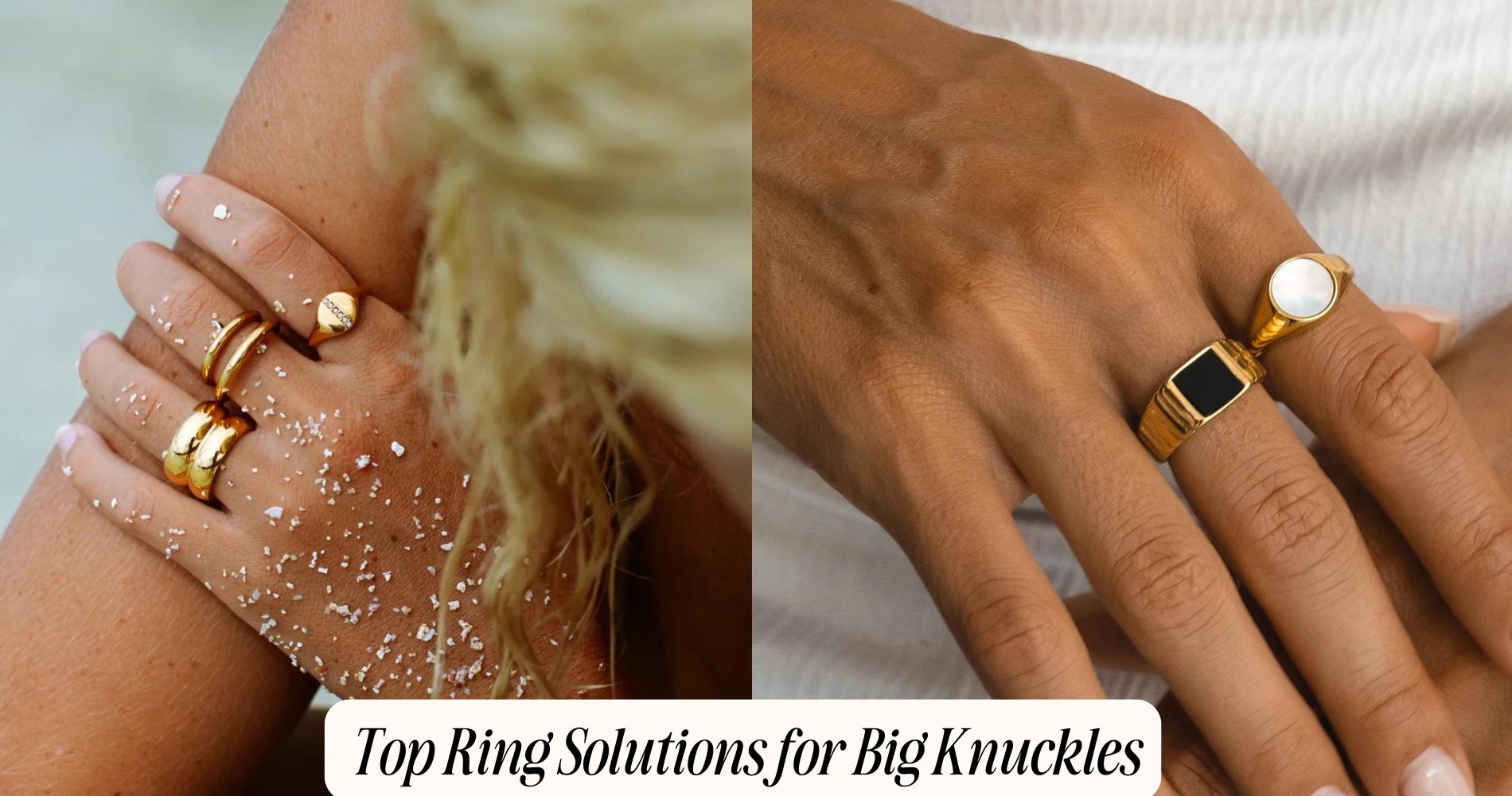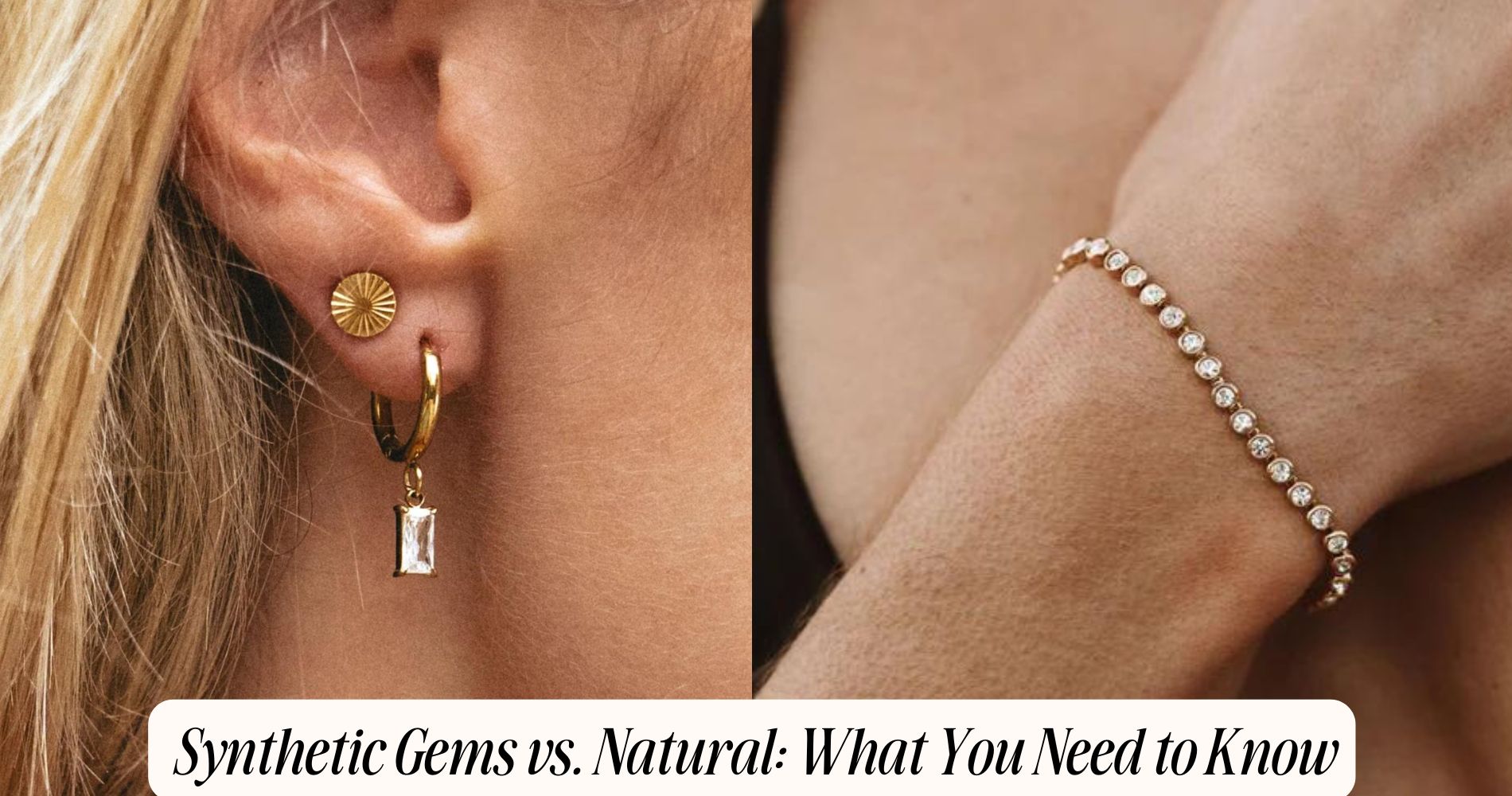
Synthetic Gems Vs. Natural: What You Need to Know
When comparing synthetic gems vs natural ones, it's essential to recognize the key differences. Synthetic gems are created in a lab, replicating natural properties but often with higher purity and fewer imperfections. On the other hand, natural gems develop over millions of years, carrying unique flaws that reflect their geological origins. Price variations depend on demand—synthetic gems are more affordable, while high-quality natural gems can appreciate in value. Ethical concerns also play a role, as synthetic gems generally have a lower environmental impact compared to traditional mining. Understanding these factors will guide you in making informed decisions for both aesthetics and investment. Explore our waterproof jewelry collection to learn more about your options.
Definition of Synthetic Gems
Synthetic gems are often created in controlled environments to replicate the chemical, physical, and optical properties of their natural counterparts. You'll find that synthetic gem characteristics closely mirror those of natural gems, often making it challenging to distinguish between the two without advanced testing.
These gems are produced using methods like high-pressure, high-temperature (HPHT) or chemical vapor deposition (CVD), which allow manufacturers to manipulate variables to achieve desired attributes.
During synthetic gem production, elements such as carbon, silicon, or aluminum are subjected to specific conditions that mimic the natural processes occurring over millions of years. As a result, you get gems that can exhibit identical refractive indices, color, and clarity to their natural equivalents.
However, one key distinguishing factor is that synthetic gems typically contain fewer inclusions and imperfections, providing a level of purity and consistency that's hard to find in nature.
Ultimately, understanding the definition of synthetic gems involves recognizing their engineered origins and the advanced technology used to create them. This knowledge empowers you to make informed choices when selecting gems for personal or investment purposes.
Definition of Natural Gems
Natural gems are formed through geological processes over millions of years, arising from the earth's crust without human intervention. This complex gemstone formation involves extreme heat, pressure, and specific environmental conditions, which contribute to the unique characteristics of each gem. Elements and minerals interact over time, resulting in the crystallization that gives rise to various gemstones, such as diamonds, rubies, and sapphires.
Rarity factors play an important role in defining natural gems. The availability of raw materials, the geological conditions required for formation, and the time it takes for these processes to occur all contribute to a gemstone's scarcity. For instance, certain gems are found only in specific locations, making them harder to source and consequently more valuable.
Additionally, factors like color, clarity, and size further influence their rarity and desirability in the market.
Understanding these elements is essential for appreciating the true value of natural gems. By examining the intricate processes behind their formation and recognizing the factors that contribute to their rarity, you can make informed decisions when purchasing or collecting these beautiful treasures.
Key Differences Between Them
When comparing synthetic and natural gems, several key differences emerge that greatly impact their value, formation processes, and market perception.
The creation processes of these gems are fundamentally different. Natural gems form over millions of years through geological processes, involving heat, pressure, and the presence of specific minerals. In contrast, synthetic gems are produced in laboratories using advanced techniques like the High-Pressure High-Temperature (HPHT) method or Chemical Vapor Deposition (CVD), which replicate the conditions necessary for gem formation but in a fraction of the time.
Visual characteristics also play a significant role in distinguishing these gems. While synthetic gems can be virtually identical to their natural counterparts, subtle inclusions or growth patterns often reveal their origins.
Natural gems may display unique imperfections, while synthetic gems typically exhibit fewer flaws due to controlled creation processes. Additionally, color saturation might differ; synthetic gems can be engineered for consistent hue, while natural gems vary due to geological factors.
Understanding these differences is vital for making informed decisions regarding gem purchases and ensuring authenticity in your selections.
Value and Market Trends
The value of gems, whether synthetic or natural, is influenced by various market trends that shape consumer preferences and investment potential. One key factor is market demand, which directly impacts pricing fluctuations. As consumers become more aware of synthetic alternatives, the demand for both types of gems evolves, leading to significant shifts in their respective markets.
In recent years, synthetic gems have gained traction due to their affordability and ethical production processes. This shift has resulted in increased market demand for these gems, often leading to a decrease in the value of comparable natural stones.
Conversely, high-quality natural gems, especially those with unique characteristics or historical significance, have maintained or even increased their value amidst rising synthetic options.
Investors should monitor these trends closely, as pricing fluctuations can indicate broader market movements. A rise in synthetic gem sales may signal a shift in consumer priorities, while sustained interest in natural gems may suggest their enduring value as a long-term investment.
Understanding these dynamics can help you make informed decisions in the ever-evolving gem market.
Ethical Considerations
Ethical considerations play a vital role in the ongoing debate between synthetic and natural gems, influencing consumer choices and industry practices. When you evaluate these options, understanding the environmental impact and sourcing practices is essential.
Natural gems often come with a hidden cost, including habitat destruction, water pollution, and the exploitation of labor in mining operations. You might find it alarming that traditional mining can devastate ecosystems and communities, leading to long-term ecological damage.
In contrast, synthetic gems typically have a markedly lower environmental impact. Their production generally requires less energy and water, and they don't contribute to the destructive practices associated with mining.
By choosing synthetic options, you can support more ethical sourcing practices, as these gems are created in controlled environments, free from the ethical dilemmas tied to labor exploitation and environmental degradation.
Ultimately, the decision between synthetic and natural gems hinges on your values regarding sustainability and ethical consumption. By carefully considering the broader implications of your choice, you can align your purchases with your ethical standards, contributing to a more responsible gem industry.
Choosing the Right Gemstone
When choosing the right gemstone, you need to assess your personal preferences regarding style and symbolism.
Understanding the quality indicators—such as clarity, color, and cut—will help you make an informed decision.
Additionally, budget considerations play an important role, as they can greatly narrow your options between synthetic and natural gems.
Assessing Personal Preferences
Choosing the right gemstone involves a careful evaluation of your personal preferences and values. Start by considering your color preferences; gemstones come in a wide array of hues, each evoking different emotions and associations.
For instance, blue sapphires are often linked to tranquility, while fiery rubies represent passion. By identifying the colors that resonate with you, you can narrow down your options effectively.
Next, think about the emotional significance you attach to gemstones. Whether you're seeking a piece for a special occasion or a meaningful gift, understanding the symbolism behind each stone can guide your choice.
For example, diamonds symbolize eternal love, making them a popular choice for engagement rings, while amethysts are believed to promote calmness and clarity.
Additionally, consider how your personal values align with synthetic versus natural gemstones. If you prioritize sustainability and ethical sourcing, synthetic gems might appeal to you.
On the other hand, if you value rarity and the story behind a gemstone, natural stones could be more suitable. Balancing these factors guarantees that your choice not only reflects your aesthetic taste but also aligns with your deeper values and beliefs.
Understanding Gemstone Quality
Evaluating the quality of gemstones is essential for making an informed purchase. Understanding gemstone grading is vital, as it provides a standardized way to evaluate various qualities such as color, cut, clarity, and carat weight. Each of these factors plays a significant role in determining a gemstone's overall value and appeal.
Clarity factors are particularly important when evaluating a gemstone's quality. They refer to the internal or external imperfections present in a stone. A higher clarity rating indicates fewer inclusions and blemishes, resulting in a more valuable gemstone. Familiarize yourself with the clarity scale, which ranges from Flawless (no visible imperfections) to Included (inclusions visible to the naked eye).
When selecting a gemstone, consider how clarity impacts not just aesthetic appeal but also durability. Gemstones with high clarity often exhibit better light performance, enhancing their brilliance and fire.
Ultimately, understanding these grading systems and clarity factors empowers you to make a choice that reflects both your personal taste and investment goals. By prioritizing quality, you guarantee that your gemstone not only meets your expectations but also stands the test of time.
Budget Considerations
Setting a budget for your gemstone purchase is essential to guarantee you find a stone that meets both your financial limits and aesthetic desires.
Start by determining the maximum amount you're willing to spend. This step helps you filter options effectively, especially when conducting price comparisons between synthetic and natural gems.
Synthetic gems typically present a more affordable alternative, often costing considerably less than their natural counterparts.
However, consider the long-term implications of your choice. While natural gemstones can appreciate in value, offering potential investment potential, synthetic stones may lack this characteristic due to their mass production and lower rarity.
Evaluate your priorities: Are you seeking a stunning piece for immediate enjoyment, or do you envision this purchase as a long-term investment?
If the latter, focus on natural stones with proven market stability and historical appreciation.
Frequently Asked Questions
Can Synthetic Gems Be Used in Scientific Applications?
Yes, synthetic gems can be utilized in scientific applications. Laboratory created gems offer precise optical properties and uniform characteristics, making them ideal for research and technological advancements, such as in lasers, electronics, and specialized instrumentation.
How Do Synthetic Gems Impact the Environment?
Synthetic gems enhance environmental sustainability by providing mining alternatives that reduce habitat destruction and pollution. You'll find that their production often requires fewer resources, minimizing the ecological footprint compared to traditional gemstone extraction methods.
Are There Any Health Risks Associated With Synthetic Gems?
You won't find significant health risks associated with synthetic gems. Their chemical composition mirrors natural ones, and some studies suggest potential health benefits, but more research is needed to fully understand their effects on human health.
Can Synthetic Gems Be Resold at a Profit?
You can resell synthetic gems at a profit, but your success hinges on market demand and the gem's resale value. Research trends to gauge interest and determine pricing strategies that maximize your potential return.
How Long Do Synthetic Gems Last Compared to Natural Gems?
When considering gem longevity, synthetic durability generally matches or exceeds that of natural gems. Both types resist wear and tear, but synthetic gems often have fewer internal flaws, enhancing their overall lifespan and performance.
Conclusion
In summary, understanding the distinctions between synthetic and natural gems is essential for making informed choices. While synthetic gems offer affordability and ethical advantages, natural gems hold unique value and rarity. Consider your priorities—whether it's cost, ethics, or the allure of nature—before selecting a gemstone. By weighing these factors, you can confidently choose the right gemstone that aligns with your values and preferences, ensuring your investment is both meaningful and satisfactory.

























Leave a comment
This site is protected by hCaptcha and the hCaptcha Privacy Policy and Terms of Service apply.